What are species tulips? Expert tips on how to grow these vibrant flowering bulbs
Species tulips can add something unique to outside spaces when compared with more familiar, modern tulips
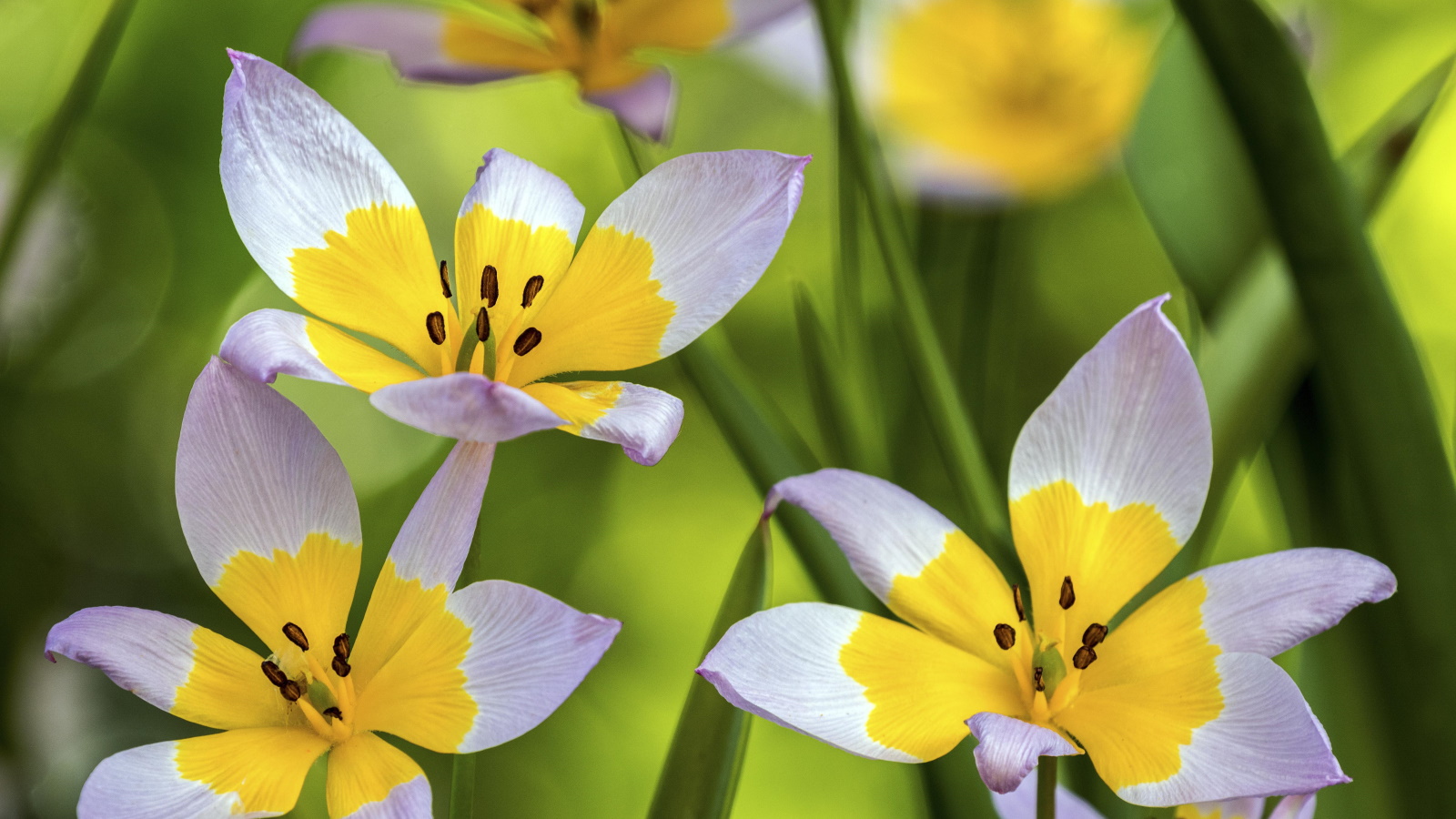

Of all the spring bulbs, tulips are undoubtedly one of the most popular. As a sign that spring has sprung, tulips are famed for their color and shape, appearing attractive in flower beds and as cut flowers in a vase. There are many tulip types to pick from, yet one that deserves more attention is species tulips, otherwise known as botanical or wild tulips.
'Species tulips are the smaller ancestors to the hybrid tulips we see all across the market today,' explains bulb expert Katie Sunderlage. While they might not be quite as showy as hybrid tulips, 'they are certainly more reliable,' continues Katie, 'blooming year after year.' Not only are they reliable bloomers, 'they also naturalize easily, forming large clumps and drifts where they have been planted.'
Species tulips are found growing naturally in regions across southwestern Europe, North Africa and central Asia. Often, the flowers of species tulips are much smaller than their hybrid cousins, but this does not detract from their unique beauty. They are valued for their dainty, star-like flowers and unique colors. Species tulips are also 'one of the few types of tulips that are deer resistant,' Katie adds, which is often a concern for gardeners. Here, we discuss how to grow species tulips to add something unique to your plot this year.
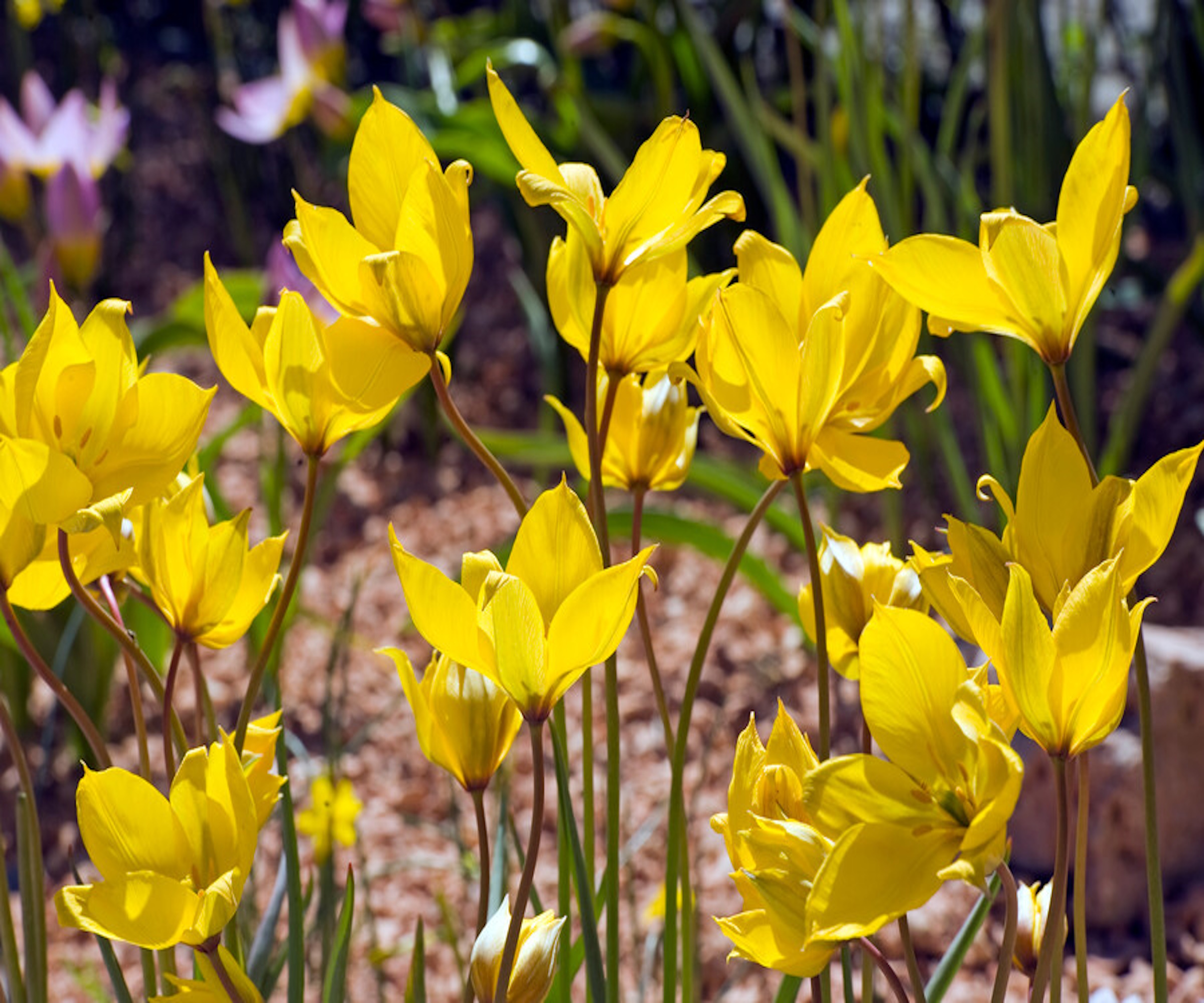
Wild Tulip - Tulip sylvestris

Operations Manager at Holland Group, managing the customer service department and purchasing. Katie has been in the green industry since 2005 in the Greater Milwaukee area, earning her degree in Horticulture in 2008. She has been able to share her love for plants working in multiple garden centers, in sales positions and most recently in an online retail platform at Holland Group.
How to grow species tulips
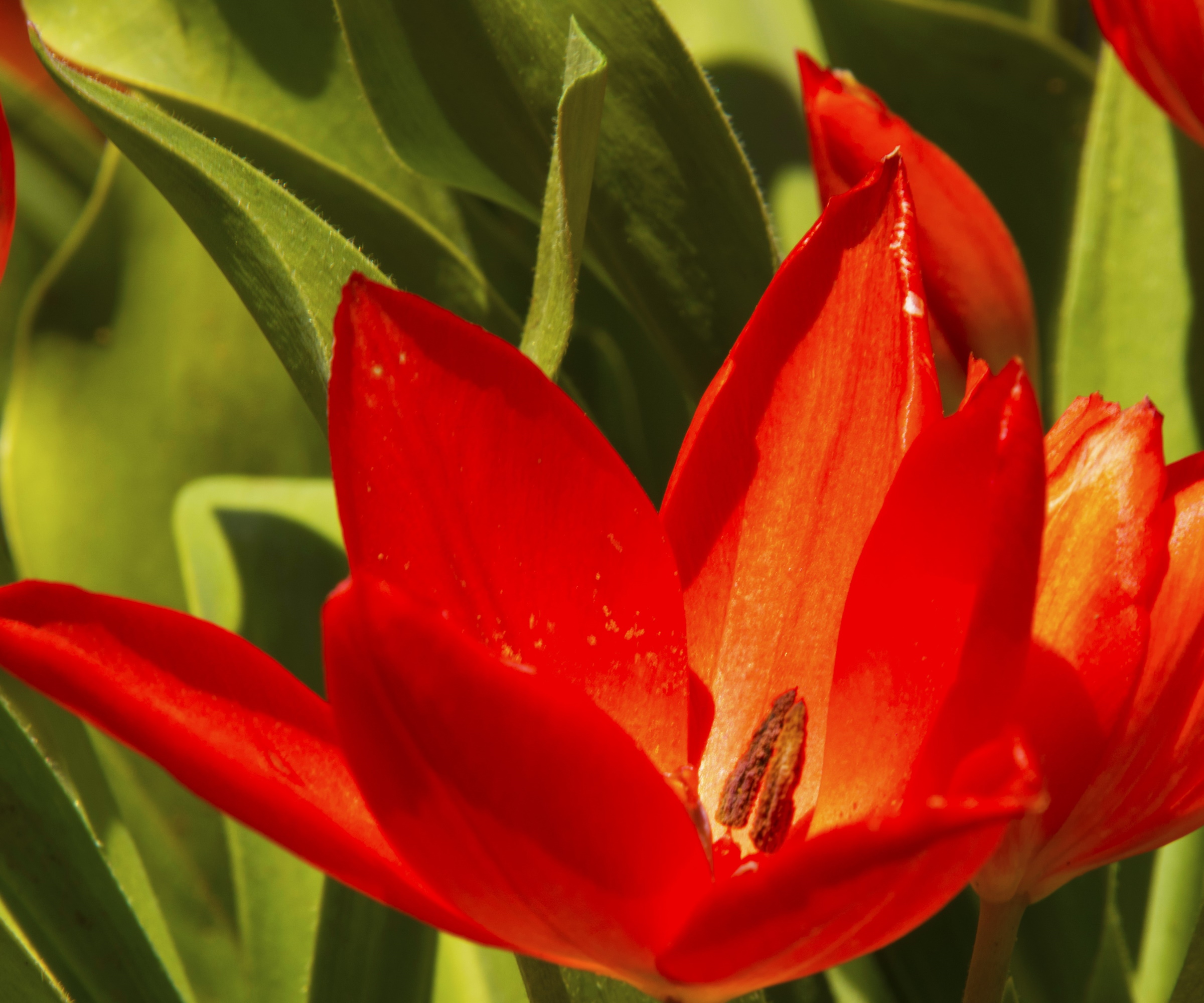
Wild tulip - Tulipa sprengeri
Most, if not all, varieties of species tulips require sun and good drainage. Most species are extremely cold tolerant, found growing naturally in mountainous regions and so will grow well somewhere in US hardiness zones 3 to 7.
Of greater concern is wet winters, which can cause the bulb to rot if drainage is poor. 'Just like normal tulips, they like to be dry in their dormant months,' says Vanessa Elms, horticulturist and owner of Old House Gardens.
Species tulips are well-suited to rock gardens, but if you do not have a gravel or rock garden in your yard, fear not, just remember to incorporate some sand or grit when you plant your bulbs. This is typically done in the fall, planting the bulbs at 2 to 3 times the depth of the bulb. It is important to find the right spot that will suit the species you are planting if you want the bulbs to naturalize. 'In the right location, with the right conditions, species tulips tend to be more perennial,' Vanessa adds.
Bulbs can be fed during the growing season using something like this organic fertilizer from Walmart, which will help to increase their vigor. Allow the leaves to turn yellow before you cut back the foliage, which can take until mid-summer.
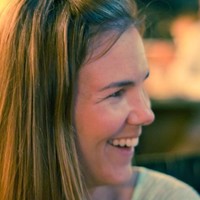
Vanessa Elms is a horticulturist and the owner of Old House Gardens, a business devoted entirely to heirloom bulbs, many available nowhere else, and an international leader in the preservation of these fabulous relics.
Varieties of species tulips to grow
There are numerous options for those interested in planting species tulips, each with special characteristics and a distinctive look. Some have pointed flowers, while others have star-shaped, open flowers. Colors can range from crimson reds to soft pinks and whites. Here, we list some of our favorites.
Tulipa sylvestris
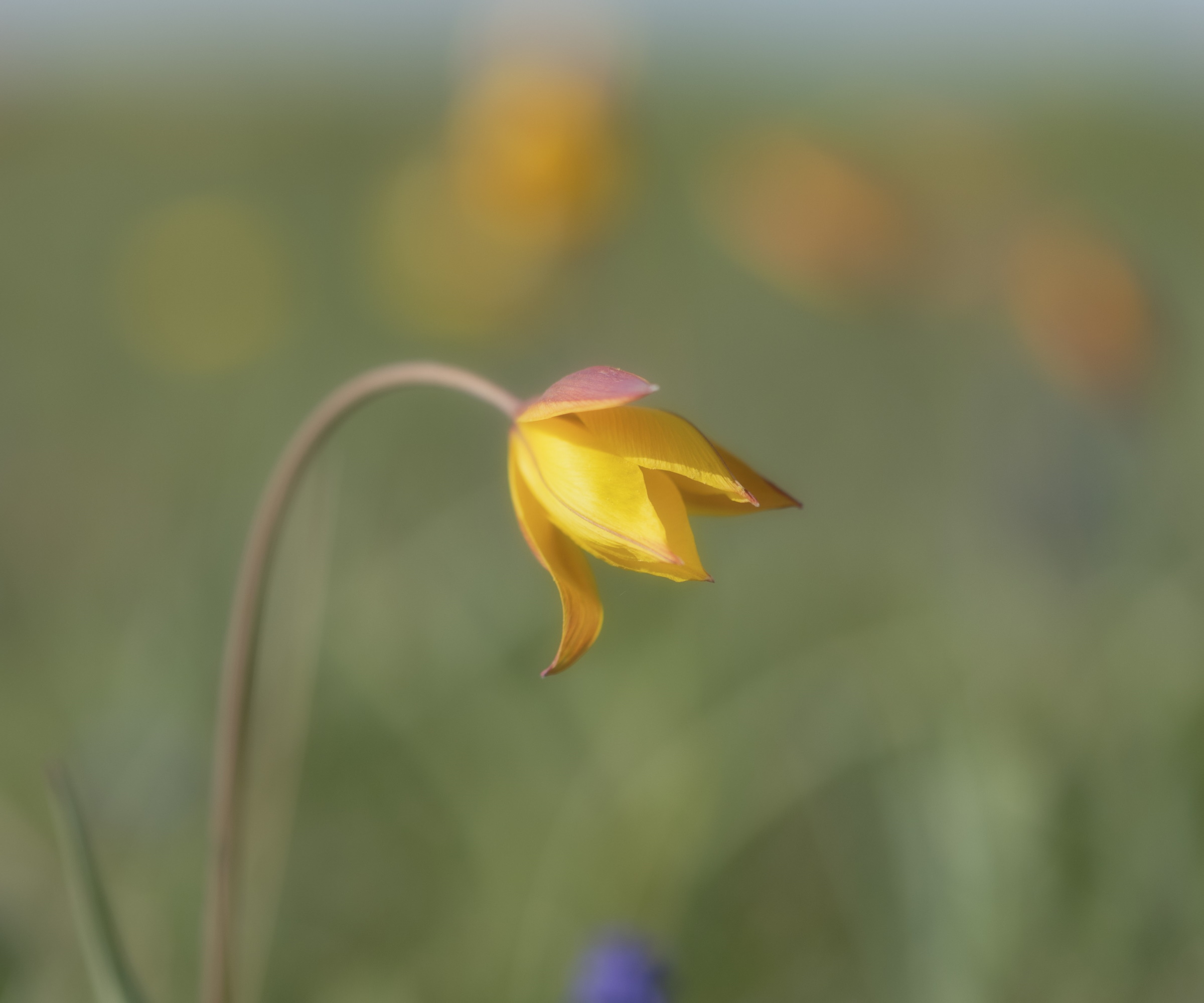
Wild tulip - Tulipa sylvestris
Often found growing in woodland areas, Tulipa sylvestris is bright yellow in color, growing well in grass and in the light shade of large trees. One of the taller species tulips, it will grow up to 12 to 15 inches tall, although is often seen drooping, which looks particularly effective in cut flower displays. Tulipa sylvestris is hardy up to US hardiness zone 5, and if planted in the right spot, it will naturalize easily and thrive for decades.
Tulipa sprengeri

Wild tulip - Tulipa sprengeri
The crimson and pointed flowers of Tulipa sprengeri will not disappoint. This is one of the later flowering tulips, often blooming into June, depending on location and climate. It is hardy up to US hardiness zone 8 and is one of the more shade-tolerant species tulips, doing well under large shrubs or on the edge of woodland gardens.
Tulipa ferganica

Wild tulip - Tulipa ferganica
Tulipa ferganica requires a good amount of heat and direct light to do well. The native range of this species is Central Asia, growing to around 6 to 8 inches tall. Drainage is key with this species, so avoid planting in damp soils. It will grow well in US hardiness zones 3 to 7. If planted in the right spot, Tulipa ferganica will naturalize, producing more and more egg-yolk yellow blooms every year.
FAQs
Do species tulips come back year after year?
Unlike modern hybrid tulips, species tulips can be thought of as perennial, and will flower every year, losing none of their vigour. Plant them in a position where you are happy for them to naturalize and spread.
Consider planting other bulbs this year that will grow year after year, with little attention required. Many of the best miniature bulbs, for example, can be treated as perennials, with snowdrops and muscari providing an annual flower show in the yard.
Sign up to the Homes & Gardens newsletter
Design expertise in your inbox – from inspiring decorating ideas and beautiful celebrity homes to practical gardening advice and shopping round-ups.

Thomas is a Content Editor within the Gardens Team at Homes and Gardens. He has worked as a professional gardener for both public spaces and private estates, specializing in productive gardening, growing food and flowers. Trained in Horticulture at the Garden Museum, he has written on gardening and garden history for various publications, including The English Garden, Gardens Illustrated, Hortus, The London Gardener and Bloom. He has co-authored a Lonely Planet travel book, The Tree Atlas, due out in 2024.
-
 Kris Jenner's favorite air fryer, the Ninja Crispi, is the perfect small kitchen solution – it deserves a place on the most compact of countertops
Kris Jenner's favorite air fryer, the Ninja Crispi, is the perfect small kitchen solution – it deserves a place on the most compact of countertopsKris approves of this compact yet powerful air fryer, and so do our own kitchen appliance experts, praising it for its multifunctionality
By Hannah Ziegler Published
-
 Ina Garten's storage pantry is an insightful window into all of the best cookware used by the chef – and it's easy to recreate on your kitchen shelves from $48
Ina Garten's storage pantry is an insightful window into all of the best cookware used by the chef – and it's easy to recreate on your kitchen shelves from $48The beautiful dishware in The Barefoot Contessa's Hamptons pantry showcases the tools she uses most often to cook – this is exactly how you replicate it
By Sophie Edwards Published